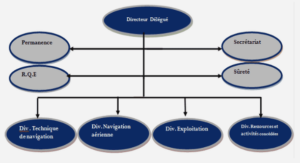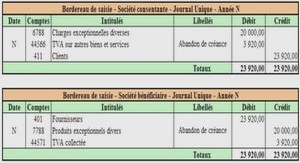Though not unanimously, it is often agreed that England’s most serious aspect of her colonization of India was the extortion of Indian wealth so as to nourish her own economy being since the mid-eighteenth century increasingly industrialized.
With the rise of the capitalist spirit in England from 1760s, the business of going and fetching funds from India proved concomitantly imperative. India constituted, mainly through unprecedented levels of taxation imposed on all her classes, one of the principal money sources to British banks securing thus Britain’s modernization. British statesmen and scholars conceded that between 1757 and 1815 about £ 1.000 million were transferred from Indian boards to English banks mainly as tax revenues. But, Habib reported more accurate figures from statistics by the American historian H. Furber according to which the total drain, including private remittances by Englishmen, amounted in average to £ 1,78 million annually between 1783 and 1793. Habib explained that financial role as follows : We must remember that the total rate of capital formation in Britain was probably no more than 7 per cent of the national income about this time [1801]; and this means that, at this crucial stage of the Industrial Revolution, India was furnishing an amount that was almost 30 per cent of the total national saving transformed into capital …….…. during 1821-31 to 1831 61, net domestic capital formation accounted for only 7,4 per cent of the national income. This means that the pressure for tribute could not be relaxed.
The American historian Brooks Adams observed the complementary pecuniary relationship between the First British Industrial Revolution and India, too. His quoted words are “before the influx of the Indian treasure and the expansion of credit which followed, no force sufficient for this purpose (the First British Industrial Revolution) existed; and had Watt lived 50 years earlier, he and his invention must have perished together.” But, the purpose of that colonial taxation was much beyond remittances. The British wanted a reliable colonial strategy by means of which they would be able to afford Indian raw materials for the industrial needs of their mother country.
The drain of Indian wealth to support British mechanical industries manifested itself in the export of miscellaneous Indian commodities, which sometimes resulted in a considerable excess of imports from the colony over exports thereto. Those imports increased from £ 1,5 million in 1750-51 to £ 5,8 million in 1797-98. It was a type of trade in which “the purchase of these commodities in conditions where the buyer had a monopoly and their sale in markets throughout the world, further enlarged the profits before the ‘tribute’―a word freely in use for it at the time―was finally received in England”.
Habib added that those goods were cheaply got and had to be resold at their full prices i.e. high prices. Indeed, colonial customs tended to record those prices “at prime costs, or even simply accepted declarations as to prices prevailing in the country of origin.” In other words, the British tended to under-valuate Indian goods when buying them so as to inflate their profits. In this design, Habib assessed Britain’s total gain at the expense of India at over £ 4,70 million just for 1801.
Land Revenue
Like the Mughals, the English came to India as total aliens. However, unlike the former, the latter did not adopt the country as their own. The Mughals had never tried to plunder it in favour of another country. It is claimed that the former conquerors of India made changes on the social ground only, and India’s economic structure had remained unaffected. However, in applying laws and principles of her own, “L’Angleterre a fracassé toute la structure de la société indienne, sans aucun symptôme de reconstruction ait encore fait son apparition.” said Karl Marx in 1853.
Whereas in the last year of Bengal’s native civil administration, namely 1764- 1765, land taxes had amounted to £ 817.000, only in the first year of the region’s civil administration by the Company, namely 1765-1766, they amounted to £ 1.470.000. The Company’s Resident Minister in Murshidabad affirmed in 1769 that “Ce beau pays, qui était florissant sous le plus despotique et le plus arbitraire des gouvernements, est au bord de la ruine depuis que les Anglais prennent tant de part à son administration” Deeply affected by the new level of taxation, Bengal, which then counted the today regions of Bangladesh, Orissa, Bihar, and South Assam, was in 1770 smitten with a severe famine that wiped out one-third of its population. One fact that one may provide to prove the atrocity of early company rule is the fact that landexcise was, according to Dutt, not only firmly maintained throughout that famine but also increased.
According to Naik, India’s enduring propensity for colonial servitude is to be primarily attributed to the general backwardness of the Indian masses. These were so attached to their ancient religious traditions and social evils related to their caste system. India’s caste system did not merely classify its whole population into nonmixable corporate units, namely castes, by descent, marriage, occupation, or heredity. It was also, as criticized by the French sociologist Céléstin Bouglé, strongly determined by the notions of impurity as well as mutual repulsion. Thus, the German sociologist Max Weber claimed that India’s caste system was one reason behind her retarded intellectual progress as compared to the Western countries. In fact, one may argue that unlike the other countries India was then devoid of national spirit and solidarity that could have then withstood its colonizer. In 1841, the nationalist writer Bhaskar Tarkhadkar asserted in a letter addressed to the English daily the Bombay Gazette that : It is the priest craft of the brahmina that have so far lowered the national character of the Hindoos as to be easily governed and even tyrannized over by a handful of foreigners which is greatly to be lamented, but it is the political craft of the latter that has now impoverished them, which is still more to be lamented .
Pre-British India’s economy used to be organized traditionally; in other words, agriculturally. In fact, land was the main economic source there. Village economy was typically communist on the basis of common land ownership. Every new village community was to operate this way. The Mughal emperor was India’s supreme leader and had a share from the annual national harvest but with no pretension over land ownership. Indeed, there existed no privacy of land in the Indian Sub-Continent.
Besides, the bulk of agricultural production was meant for the direct consumption of village members and never became merchandise. Only the surplus was allowed to become merchandise. Only a share of the harvest was owed to central government accountable in return for irrigation and public works. Common landownership engendered the common exercise of farming as well as the sharing of crops. Actually, Actually, the pre-British Indian village assumed the feature of subsistence farming; in other words, self-sufficiency.
The British rule of India ended the traditional right of the village community to the village land. In fact, unlike pre-British India, British India was radically imbued with private land ownership with sale and alienation. It was a process of change launched in Bengal in 1793 by Governor-General Lord Charles Cornwallis by virtue of his Permanent Settlement Act which developed the Zamindari system. In parallel but to a lesser extent, the British Company developed the Ryotwari system.
General Introduction |





